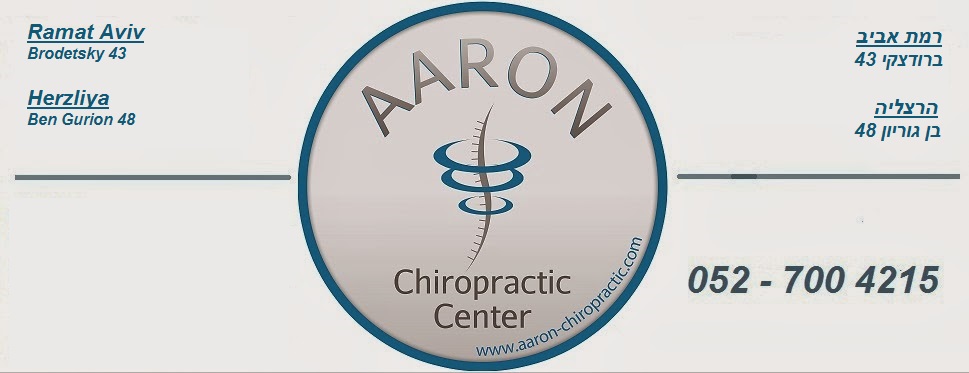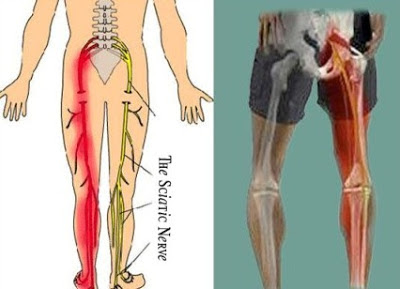Lumbar disc pathology
- What's a disc ?
In between each of the five lumbar vertebrae (bones) is a disc, a tough fibrous shock-absorbing pad.
The disc is a combination of strong connective tissues which hold one vertebra to the next, and acts as a cushion between the vertebrae. The disc is made of a tough outer layer called the "annulus fibrosus" and a gel-like center called the "nucleus pulposus."
As you get older, the center of the disc may start to lose water content, making the disc less elastic and less effective as a cushion.
Nerve roots exit the spinal canal through small passageways between the vertebrae and discs. Pain and other symptoms can develop when the damaged disc pushes into the spinal canal or nerve roots.
- Differential Diagnosis : Degeneration vs Prolapse vs Herniation vs Nerve Compression
Disc Degeneration
Disc Degeneration refers to a syndrome in which a painful disc can cause associated low back pain. The condition generally starts with an injury to the disc space.
The injury weakens the disc and creates excessive movement because the disc can no longer hold the vertebrae above and below the disc together as well as it used to.
The excessive movement, combined with the inflammatory response irritate the local area, commonly producing symptoms of low back pain.
Unlike the muscles in the back, the lumbar disc does not have a blood supply and therefore cannot heal itself and the painful symptoms of degenerative disc disease can become chronic and lead to further problems such as herniation and nerve root compression.
It is important to note that disc degeneration is part of the natural process of aging.
MRI scans have documented that approximately 30% of 30 year olds have signs of disc degeneration on MRI scans even though they have no back pain symptoms. It must therefore be stressed that not all degenerated discs that are seen on MRI scans are pain generators.
Herniated Disc
Herniated discs are often referred to as "slipped discs", “bulging discs”, or “prolapsed discs”. This term is derived from the action of the nucleus tissue when it is forced from the center of the disc. The disc itself does not slip. However, the nucleus (soft inner layer) tissues located in the center of the disc can be placed under so much pressure that it can cause the annulus (outer tough layer) to herniate or rupture. This can be seen in its varying degrees of severity in the adjacent picture from stages 2-4. The severity of the discs herniaiton may cause the bulging tissue to compress against one or more of the spinal nerves which can cause local and referred pain, numbness, or weakness in the low back. leg or foot. Approximately 90% of disc herniations will occur at L4- L5 (lumbar segments 4 and 5) or L5- S1 (lumbar segment 5 and sacral segment1), which causes pain in the L5 nerve or S1 nerve, respectively.
Nerve Compression/Sciatica
The sciatic nerve is the large nerve that extends down the spinal column to its exit point in the pelvis and carries nerve fibers to the leg. Sciatica is a condition in which a herniated or ruptured disc presses on the sciatic nerve,. This compression causes shock-like or burning low back pain combined with pain through the buttocks and down one leg to below the knee, occasionally reaching the foot. In the most extreme cases, when the nerve is pinched between the disc and an adjacent bone, the symptoms involve not pain but numbness and some loss of movement control in the leg due to interruption of nerve signaling. The condition may also be caused by a tumor, cyst, metastatic disease, or degeneration of the sciatic nerve root.Signs and Symptoms of Lumbar Disc Injury Lumbar disc pathology
Initial signs and symptoms may include centralized low back pain, early morning stiffness, pinching and catching, muscle spasm, pain on movement (mainly bending and twisting), and reduced range of low back movement. If the condition progresses and the lumbar disc deteriorates further to cause nerve compression symptoms may present as radiating low back pain, shooting pains down the leg and into the foot, numbness, pins and needles, burning, muscle weakness, and further reduced low back range of movement.
What Increases Your Risk? Factors You Cannot Change
1. Advancing age. The process of aging of the discs in the lower back, as well as repeated injury to the discs and spinal muscles, makes a person more likely to have low back problems, which usually begin in mid-life
2. Males greater than female
3. History of previous back injury
Factors You Can Change
1. Your job or other activities that increase the risk of developing a herniated disc, such as long periods of sitting, lifting or pulling heavy objects, frequent bending or twisting of the back, heavy physical exertion, repetitive motions, or exposure to constant vibration (such as driving)
2. Smoking. Nicotine and other toxins can impair spinal discs' ability to absorb nutrients they need from the blood, making the discs more prone to injury.
3. Being overweight. Carrying extra body weight (especially in the stomach area) causes additional strain on the lower back.
4. Inactivity. Begin a physical activity, a sport you like. Swimming (back crawl is the must, i do not advise the breast stroke) walking or running (only with good shoes ! do not use used ones that can lead to low back injury !).
5. DRINK WATER !!! (Human body is composed of 90% of water !!!)
www.aaron-chiropractic.com








אין תגובות:
הוסף רשומת תגובה